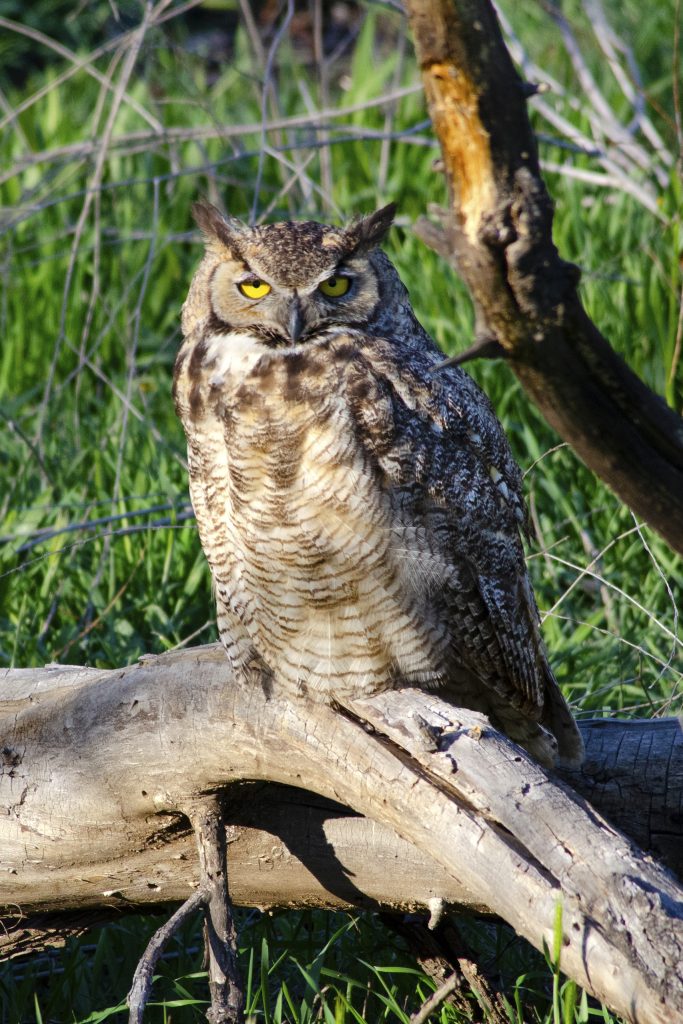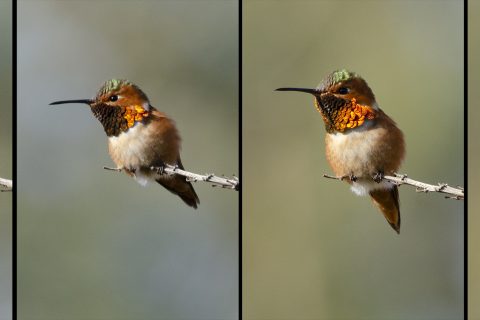
Getting a stunning scenic or wildlife shot is not about showing up somewhere and snapping a photo. I have very few remarkable photos of places I have only visited once. You have to be very lucky to get a great photo on a single visit to a place. One exception was my visit to Crater Lake National Park, Oregon, which you can see in my portfolio, but even that was carefully calculated. I knew the sky that day would be totally blue, to go with the astounding blue water of the world’s seventh deepest lake. I also knew that there was still deep snow on the ground in early June to play off of it. I lived about a two-hour drive away in Eugene and I had been waiting for the right day, but the only way to get the best shots was to have access to the north rim. The park’s web site still stated that the road to the north rim was closed for the season, but I went anyway, vowing to snowshoe around from the south if I had to. To my delight, I found that the web site had not been updated—the road had just opened two days before, and as a result I got some stunning shots.
Going Back to the Same Spot
Patience and persistence work especially well for settings that are in your local area, so you can get to them without having to drive for hours. The photos below are from the Mormon Rocks in the Cajon Pass of Southern California, the busiest mountain pass in the world, with imposing, enormous slabs of pink sandstone that are uplifted by the San Andreas Fault, which runs through the area. I often shoot here, and one of the scenes I most wanted to capture was a storm moving out of the pass with the tracks in the foreground and areas of light coming through the clouds and highlighting the rocks. I tried this several times over a period of years every time I thought the conditions and light would be right. The photo on the left below was the before shot. It was too early in the day so the mood I was looking for was not there—too washed out. The clouds were there, but they were not dark enough, and although the light was shining on the rocks in the distance, it wasn't what I was looking for. By the time it came together, on the right, you can see the storm was moving out later in the day, almost at sunset, so the light was what I had envisioned. I also moved across that highway bridge in the other photo about a half-mile up the tracks to get closer to the uplifted rocks. You can also see that some time had passed between these two photos, because now there are two tracks going through the pass.


Another take on patience and persistence is shown in the two photos below. One of my favorite local hiking and photography areas is Sycamore Canyon Wilderness Park in Riverside. During one of my hikes a few years back I noticed large owl pellets and bones of numerous small rodents on rocks in a secluded area of the park near a stream with willows and an adjacent large meadow that was perfect for hunting rodents at night. During the first time I was there I found no sign of the owl itself, except for those I mentioned. After that, I made it a point to check out this spot when I was hiking out there. The third time I came back I was rewarded for my patience and persistence by not only one Great Horned Owl, but two. These are photographs from that trip. The female is in the left photo, and the male is on the right in the photo with both of them.










